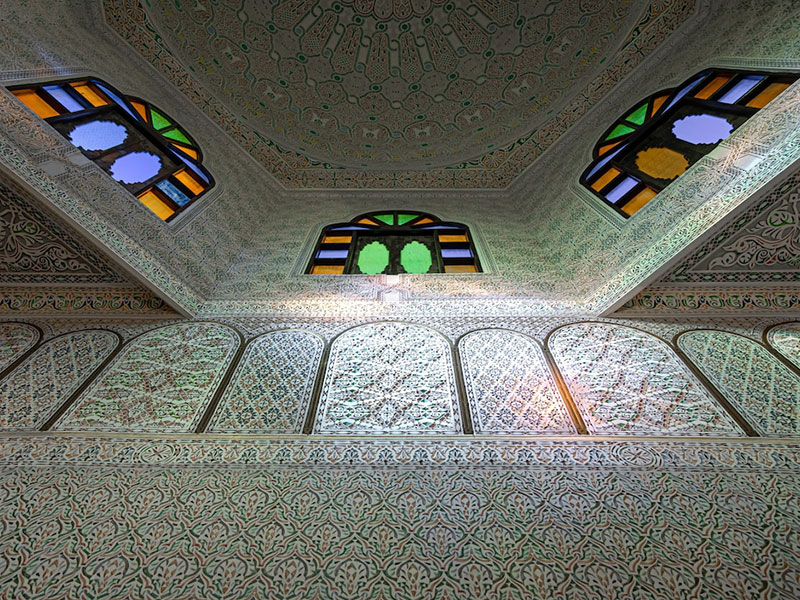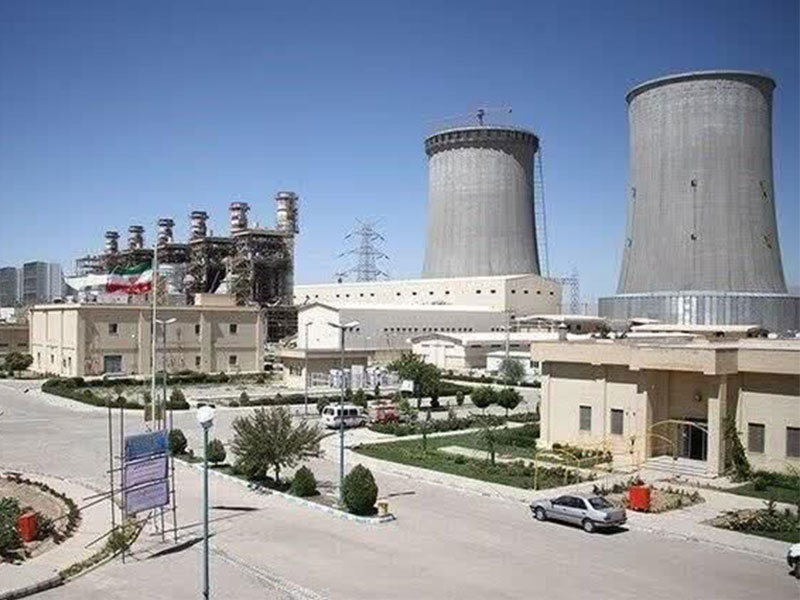Architecture is not a passive phenomenon that is governed only by the geometry of volumes, but it is the art of creating a quality space and creating a place to respond to the immediate and future needs of humans, which expands through a process in space and time and ends in space. Iranian architecture shows great diversity in both structure and aesthetics, from different traditions and experiences. Despite the lack of sudden innovation and the trauma of repeated invasions and culture shocks, it has acquired a uniqueness that is different from other Islamic countries.
Architecture in Iran from the Beginning
The history of architecture in Iran dates back to at least 5,000 BC. Distinctive examples are scattered across large regions from Turkey and Iraq to Uzbekistan, Tajikistan, the Caucasus and Zanzibar. Persian buildings range from peasant huts to teahouses to garden pavilions to some of the most majestic structures the world has ever seen. In addition to historic gates, palaces and mosques, the rapid growth of cities such as the capital Tehran has triggered a wave of demolition and new construction.
Persian architects were in great demand in antiquity, before the emergence of modern architecture. For example, Badreddin Tabrizi built Rumi’s tomb in Konya in 1273 AD, while Ostad Isa Siraj is most commonly recognized as the chief architect (or planner) of the Taj Mahal. These craftsmen also contributed to the design of buildings such as Jamhi his minaret in Baku, Afghanistan, the Sultaniye Cathedral and the Tomb of Tamerlane in Samarkand.
Architecture in Iran has experienced various styles, such as Persian, pre-Persian, Median, Parthian, and special architectures of the Achaemenid, Seleucid, and Sasanian periods, which were some of the various styles and methods of architecture before the advent of Islam in Iran. After Islam, styles such as Khorasani, Razi, Esfahani and Azari, which include an important part of Iranian architecture, were more used by architects.
Iranian architecture with more than 6000 years of continuous history has a special reputation in the world, so that it is considered one of the most famous architectural styles in the world. The art of Iranian architecture especially, the art of traditional Iranian architecture, has a deep connection with various issues, especially religious and artistic causes that have developed and evolved in sync with nature.
Iran’s Rank in Architecture
Every year, the WDR website publishes a list of the ranking of different countries based on the number of design competition awards. The purpose of preparing this ranking is to provide information and statistics for the media and investors in the field of art, architecture, industrial design, and also to examine the growth rate of design culture in different parts of the world.
This site ranks all countries based on the number of designers who received the A’ Design Award between 2010 and 2021 and presents the best of them. For 2020-2021, a total of 108 countries were evaluated, with Iran’s ranking 60th with 285 awards and a total of 928 points. In this ranking, information about the top designers of each country is published. In Iran’s
case, the names of 169 designers, including Seyyed Mohammad Mortazavi, Hamid Pak Sarasht, Samiye Kianpour, Soroush Vahidian Kamiyar and Azadeh Gholizadeh.
Furthermore, Iran ranks second in the production of “organizational architecture” articles. Based on the results of a new research that examined the articles published in the journal related to organizational architecture from 1990 to 2018, the ranking of the leading countries in the production of articles during the said period has been determined, and the first three countries are America, Iran and Australia.
Most Amazing Architectures in Iran
- Persepolis
One of the architectural wonders of the world is Persepolis; it is one of the largest buildings that has a special place in the history of Iranian architecture. It took about 120 years for Persepolis to be completed by the art of Iranian architects and artists and as a display of greatness and The glory of the reign of the Achaemenid kings should be introduced to the world.
The pillars of this building are still standing despite the passage of many years and many events. Contrary to what it seems, these columns are not integrated and are mounted on top of each other in pieces. At the junction of these pieces, molten lead is poured, which keeps the structure stable against any shocks and tremors, and precious metals are used to decorate the motifs. The elegance used in the architecture of Persepolis, coloring and the number of stairs are some of the amazing aspects of Persepolis architecture.
- Sheikh Lotfollah Mosque
The amazing beauty of Iranian architecture can be seen in the Sheikh Lotfollah Mosque of Isfahan, which is considered one of the most famous mosques in the world in terms of architecture. It is a perfect collection of various visual arts. Its architectural style is Esfahani style, and in the mosaic tiles inside and outside the dome, the third line is used. The mihrab of this mosque is considered one of the unique masterpieces of Iranian architecture due to its mosaic tiling and delicate moqrans.
- Chehel Sotoun Palace
The architecture of Chehelston Palace is, in fact, a combination of Chinese, Iranian and French architectural art. The columns of this mansion, from which the name of the palace is derived, are made of plantain and pine wood. The reflection of the image of 20 columns in the water of the pond in front of the pool has made this mansion to be named Chehelstun.
- Eram Garden
It is considered one of the most beautiful buildings in Iranian architecture. The original building of the Eram Garden mansion was built by one of the famous architects of that period. The main building was built during the reign of Nasir al-Din Shah Qajar by Hossein Ali Khan Nasirul Molk Pirizi and after that, his nephew Abul Qasim Khan Nasirul Molk completed the semi-finished garden building. This mansion was built in the style of the Qajar era and using the Zandiye architectural style.
This building has three floors, it was built for resting in summer days, and in the front part of the columns of the second and third floor, very beautiful tiles of seven colors are used, and the painting, sculpture, tiling and plastering used in this building are masterpieces of architecture.
Some of the Best Iranian Architectures
The art of Iranian architects is not only limited to borders, and many of them have implemented attractive designs abroad and achieved remarkable success, such as Hoshang Sihun and Dariush Borbour or Bahram Shirdel or Leila Araghian, who is a young and tasteful architect.
Some designers, such as André Godard, have created works such as the National Museum of Iran, which commemorates Iran’s historical architectural heritage. Others have endeavored to combine traditional elements with contemporary design in their works, the main campus of the University of Tehran being one example. Others like Heydar Ghiai and Houshang Seyhoun sought to create entirely original works, unrelated to previous influences. Dariush Borbor’s architecture successfully combined contemporary architecture with the local language. Borj-e Milad (Milad Tower) is the tallest tower in Iran and the sixth tallest tower in the world.
Below, 7 most talented iranian architects are introduces that really influence on iran and the world’s architecture:
- Hoshang Sihon
Hoshang Sihun is known as the man of lasting monuments. The reason for this fame is his impressive works in the field of designing memorials for famous Iranians. Hoshang Sihon designed the tomb of Nader Shah in Mashhad, the tomb of Kamal al-Molk in Neyshabur, the tomb of Bu Ali Sina in Hamedan, the tomb of Khayyam in Neyshabur, reconstructed and designed the tomb of Ferdowsi in Tus, designed and built the tomb of Colonel Mohammad Taqi Khan Pesian.
- Dariush Borbor
Dariush Borbor is considered the “father of modern urban planning” in Iran. One of the most brilliant urban development plans of Dariush Borbor is the renovation plan around Imam Reza’s holy shrine and the design of Mashhad’s Reza bazaar.
Among the awards won by Dariush Bourbor, the International Golden Mercury Award of Italy in 1994 and being on the list of the world’s 50 most prominent architects in the second international exhibition of the world’s most prominent architects in 1998 in Belgrade can be mentioned.
- Abdulaziz Farmanfarmaian
Abdulaziz Farmanfarmaian is one of the famous Iranian architects who many consider to be the founder of the modern engineering system in Iran. Farmanfarmaian returned to Iran after completing his studies at the University of Fine Arts in Paris. There are many works left by Farmanfarmaian, perhaps the most important of which is Tehran’s Azadi Stadium. In addition to the Azadi Stadium, he has designed numerous buildings, among which are the oil company building, Tehran University Mosque, Ministry of Agriculture, Ministry of Labor,
Ministry of Posts, Telegraph and Telephone, Mehrabad Airport, Saadabad Mother Palace, Niavaran Palace, Tehran Carpet Museum and Tehran Stock Exchange building.
- Hossein Amanat
A prominent architect, at the age of twenty-four and after graduating from Tehran University’s architecture department, participated in a competition to design an Islamic Iranian symbol of “Modern Iran” and won the competition. The result of the first work of his career is a building that has been known as a symbol of Iran for many years: Tehran’s Azadi Tower. Hossein Amanat, who now lives in Canada, has designed many projects in Iran and abroad.
- Bahram Shirdel
Among Iranian architects, Bahram Shirdel can be considered the most international architect. Bahram Shirdel is one of the architects who has been able to design world-class projects due to his good international relations and has won awards for them. Among these projects is Alexandria Library in Egypt, National Museum of Scotland, Jacques Cartier Square in Canada, Kansai Library in Japan, urban design of Montreal in 2000, urban reconstruction of Samarkand in Uzbekistan and new city plan of Changliwei in China. He has received international awards and recognition for most of his works.
- Kamran Diba
The most famous work of Kamran Diba is the half-finished project of Shushtar New City, in which he was able to attract the attention of the world by using structural patterns and traditional building types. For this project, he managed to win the Aga Khan Award, which is considered to be the world’s highest award for architecture. Also, Shushtar’s new city plan was selected as the selected plan in the 20th century architecture and urban planning exhibition in 2000.
- Seyed Hadi Mirmiran
Mirmiran’s projects include the design of the Eel Goli residential complex in Tabriz, the design of the new city of Baharestan, the design of the Rafsanjan sports complex, the design of the Iranian embassy in Frankfurt and Bangkok, the design of the Japanese national library, the design of the Tehran governorate building, and the design of the national library of Iran. Mirmiran won many awards during his professional life, such as the certificate of appreciation for the design of the National Library of Japan, the certificate of appreciation for the improvement project of the Old Square and the Atiq Mosque of Isfahan, the award of the Iranian Architecture Award, the selected design in the international competition of the California History Museum, and the Architecture Award Iran which is one of the famous Iranian architecture association.
- Leila Araghian
The last person on this list is a young lady, Leila Araghian. Leila, who graduated with a bachelor’s degree in architecture from Shahid Beheshti University and a master’s degree from the University of British Columbia, gained national and international fame for designing Tehran’s Nature Bridge. Leila Iraqian’s design was chosen for the nature bridge in 2008 and this bridge was finally opened in 2013. In the design of this bridge, attention to environmental issues was very important, and for this reason, it was given the name of nature’s bridge. Due to its design, this bridge is not only used as a connection point between two places, but it can also help in attracting tourists through the natural landscape.
The nature bridge, designed by Leila Iraqian, was among the top 5 choices of 300 architects in the world in the 2015 American Urban Architect Competition. The Golden Clay International Award in 2013, recognition in the Asia Architecture Award in 2014 and the MEIDAA Award in the Middle East public and urban projects are part of the awards and honors that the nature bridge design has brought to Leila Iraqian. In 2016, Leila Araghian won the Aga Khan Architecture Award for this project.
Conclusion
The bottom line is, In any field and art that you try, you will undoubtedly see the name of a successful Iranian. Architecture is no exception to this rule. During the last hundred years, the importance and position of architectural art in our country has increased day by day, and Iranian architects have been able to prove their ability with creative designs. Iranian architects who breathe life into soulless bodies with their ideas.


